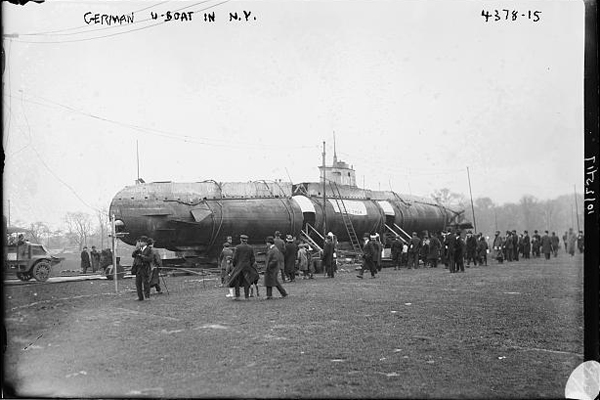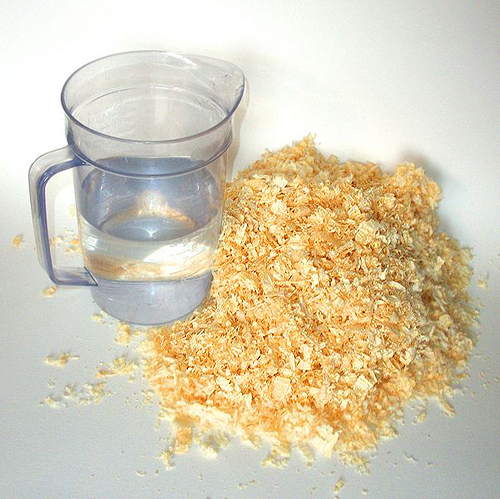Ice Aircraft Carriers and Pykrete
by Andrew Boyd
Today, something simple. The University of Houston's College of Engineering presents this series about the machines that make our civilization run, and the people whose ingenuity created them.
Supplies sent from North America to Europe were vital during Second World War. Yet, early in the war, German submarines were sinking Allied ships at an alarming rate.

Part of the problem was lack of air cover in the mid-Atlantic. Submarines were free to attack without fear of retaliation. There just weren't enough aircraft carriers to go around.
Enter Lord Louis Mountbatten, Chief of Combined Operations in the British War Office. Mountbatten's responsibilities included development of new war technologies, and he encouraged innovative thinking. Geoffrey Pyke, who reported to Mountbatten, was a fountain of new ideas. But his most famous was aimed at solving the mid-Atlantic air cover problem.
Pyke imagined aircraft carriers made largely of ice; mammoth carriers over ten football fields long — more than twice as long as today's supertankers. Mountbatten liked the idea, and took it directly to his friend, British Prime Minister Winston Churchill. Churchill liked it too, and gave the go-ahead for further development. Thus began Project Habbakuk, named after one of the Minor Prophets in the Old Testament. 'Behold ' and wonder marvelously,' said the prophet, 'for I will [perform] a work in your days which [you] will not believe.'
The advantages of an ice structure were obvious. Seawater was the primary building material, and nature would do the freezing if construction took place in the north. Torpedoes would be ineffective against a monolithic block of ice, and if damage did occur it could be fixed with an ice patch.
Of course, there were engineering challenges. For one, how to maneuver such a colossal vessel? Still, the project moved forward and a reduced size prototype was secretly completed.
One of the biggest problems proved to be the ice itself. It cracked too easily. But Pyke had an answer. Rather than freezing pure seawater, he added a little wood pulp. The result was astonishing. A mixture of one part pulp to seven parts seawater yields a substance with the strength of concrete. It came to be known as Pykrete after its inventor.

When U.S. officers were briefed on what the British had been up to, Lord Mountbatten arrived at the meeting with a block of ice, a block of Pykrete, and a gun. Firing into the block of ice, it shattered. Firing into the block of Pykrete, the bullet ricocheted, grazing the leg of a U.S. Admiral. Mountbatten had made his point, though certainly not exactly as he'd intended.
For all of the effort, and for all of the high level interest, ice carriers never went into production. Ever increasing design requirements, engineering obstacles, and competing technologies sank the project. But Pykrete lives on. It's easy to make, cheap, and remarkably strong. Unfortunately, no one's seems to have found a really good use for it.
I'm Andy Boyd at the University of Houston, where we're interested in the way inventive minds work.
Notes and references:
The proper spelling of the Minor Prophet is Habakkuk. However, the project was misspelled Habbakuk. The complete King James translation of the quotation used in the essay is:
Behold ye among the heathen, and regard, and wonder marvelously: for I will work a work in your days, which ye will not believe, though it be told you. (Hab. 1:5)
Geoffrey Pyke. From the Wikipedia Web site: https://en.wikipedia.org/wiki/Geoffrey_Pyke. Accessed June 21, 2011.
An interesting experiment with Pykrete can be found at the Web site: https://www.youtube.com/watch?v=OzhFnNY0OQI. Accessed June 21, 2011.
Special thanks to Peter Noble and Guy Vachon for bringing the story of ice aircraft carriers and Pykrete to my attention.
The pictures of the German submarine are from the U.S. Library of Congress. The picture of water and wood pulp is from Wikimedia Commons.